Umaid Bhawan Palace: Tryst with a Royal Entrepreneur
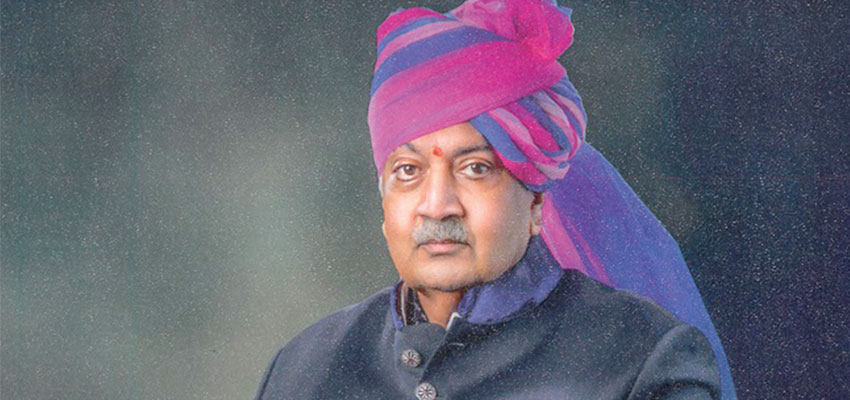
HH Maharaja Gaj Singh II, a prominent figure in India’s heritage tourism sector, serves as the chairman of the Indian Heritage Hotels Association (IHHA). Born into the illustrious royal family of Jodhpur, he carries forward a legacy steeped in rich cultural history and tradition. As a descendant of the Marwar royal lineage, Maharaja Gaj Singh II, embodies the values and responsibilities associated with his heritage, playing an instrumental role in promoting and preserving the architectural and cultural treasures of his ancestors.
Under his leadership, the IHHA has been pivotal in redefining heritage tourism in India, focusing on sustainability and community engagement. Maharaja Gaj Singh II advocates for responsible tourism practices that not only enhance visitor experiences but also ensure the preservation of local cultures and ecosystems. His vision includes promoting local cuisine, supporting indigenous artisans, and empowering communities surrounding heritage sites, creating a holistic approach to tourism that benefits both travellers and locals.
He is involved in various charitable activities, focusing on health, education, and rural development, which reflects his commitment to uplift the communities connected to his heritage. His efforts to foster a deeper understanding of India’s rich cultural tapestry make him a significant figure in the tourism industry, and his leadership continues to inspire a new generation of hoteliers and conservationists dedicated to preserving India’s extraordinary heritage.
Here, he speaks to Corporate Citizen on being the proud owner of the internationally famed Umaid Bhawan Palace, known for being the hottest spot for celebrity weddings, and lights hope on the future of heritage hotels in India
Corporate Citizen: Umaid Bhawan Palace has become an iconic palace for celebrity weddings worldwide. How does it feel to own such a celebrated landmark, and what was your role in bringing it to its current glory?
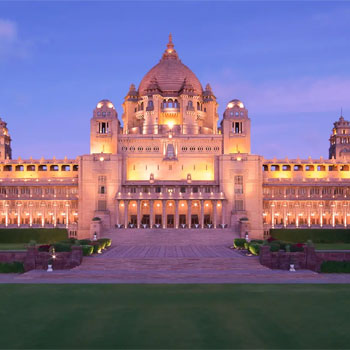
HH Maharaja Gaj Singh II: I owe much of its grandeur to my grandfather, a visionary who created the palace. Originally, he hadn’t intended to build a new palace, but in 1929, our region faced a severe famine, leaving many people in need of work. The state had exhausted its resources, so he decided to fund the palace construction himself to provide employment. It became a 13-year project, employing 3,000 people and using local sandstone. Umaid Bhawan is the last grand palace of its kind, embodying the Jazz Age spirit. Covering four acres with courtyards and a total of 26 acres within its grounds, it blends Art Deco style with elements of Indian and Buddhist temple architecture.
CC: When did Umaid Bhawan Palace start gaining popularity as a premier wedding destination?
Our first big celebrity wedding was with actress Elizabeth Hurley. She booked the entire palace, and the ‘Hello’ Magazine covered it extensively, with a dedicated 40-page spread. They kept it exclusive, so only ‘Hello’ featured the event. That marked the beginning of our journey as a sought-after venue in the 1990s. Since then, we've hosted memorable events like a lavish birthday celebration organised by British model Naomi Campbell, for her Russian boyfriend, and more recently, Priyanka Chopra’s wedding. Now, we regularly receive requests for events of all sizes, from intimate gatherings to grand celebrations.
CC: Is there a particular moment from a wedding that stands out to you?
Yes, Priyanka Chopra's wedding was exceptionally well-executed and very dignified. It had two parts—a Christian ceremony and a Hindu wedding. I attended the entire Christian wedding and caught the early part of the Hindu ceremony before I had to leave in the evening. The decorations were stunning, with beautiful pastel shades, whites, and vibrant Indian colors. Priyanka’s dress had a grand trail that covered half the staircase as she descended; it was truly a breath-taking sight.
CC: You must feel proud to own such a remarkable wedding venue…
It brings me great joy to see people enjoying this place. Originally, it was built to provide entertainment for the European and British communities, and to serve as a cultural centre. Today, it continues to fulfill that purpose, offering enjoyment for both our family and all who visit.
"Upon arriving in Jodhpur, I was truly amazed by the warm welcome from the people. I couldn’t believe it— everyone came out to greet me on the streets. This experience made me realise that while they may not have known me personally, they were inspired by the legacy of my family and the commitments my elders had made"
-Maharaja Gaj Singh II
CC: Why do you think Rajasthan is the most prominent state for heritage hotels, palaces turned hotels and havelis as hotels?

The shift to converting palaces in Rajasthan was first initiated by the region’s rulers and Jagirdars (landholders). The first major transformation occurred in the 1950s when Maharaja Sawai Man Singh II of Jaipur converted his palace into what is now known as the Rambagh Palace. I remember, as a young boy, people wondering aloud, “Why would the Maharaja of Jaipur need to turn hotelier?” Following Jaipur’s lead, Udaipur transformed its palace, and then Umaid Bhawan joined in the 1970s.
Following that, we formed a new association dedicated to heritage hotels. Many of the grand palaces are now five-star heritage hotels, and we’ve established a national organisation, the Indian Heritage Hotels Association (IHHA), with around 208 members, about 100 of which are in Rajasthan. There’s still a lot of work ahead, as other states need to catch up—we’re actively promoting the concept across regions. We host conventions and quarterly executive committee meetings in various locations, inviting local property owners, administration, and ministers to share and promote the vision.
CC: After the Privy Purse was abolished by then Prime Minister Indira Gandhi, all the royal privileges ended, and circumstances changed considerably. Did you find yourself facing new challenges?
In fact, yes. I had just returned from abroad in 1970, and by 1971, our status was de recognised. Our loyal staff remained, and we felt a duty to provide them with something meaningful to do, so transforming the palace felt like a natural step forward. The early years were tough—tourism took a while to grow, especially without a proper air connection in Jodhpur, even though my grandfather had established an international airport here back in the 1930s. Partition had changed everything, and our air connectivity was impacted. Thankfully, now they’re constructing a new terminal, and things are looking much brighter. Tourism in Rajasthan is thriving, especially in the Golden Triangle of Delhi, Agra and Jaipur. Udaipur and Jaisalmer are now renowned as exotic locations, and Jodhpur, once overlooked has finally established itself as a prominent destination.
CC: Did the Covid pandemic impact your operations?
It was indeed a challenging period. We had to send the staff home and fully close the hotel for a while. However, one positive outcome was the influx of Indian tourists and a surge in weddings as soon as restrictions eased. Many couples who had postponed their weddings started booking, and the events came one after another. This quick resurgence was very encouraging, with people eagerly returning and celebrating in large numbers, helping us recover from the difficult time.
CC: Now that you have a comparable number of domestic tourists to international ones, would you say that Indians are now spending more on holidays? And, do you find them challenging customers?

Actually, I enjoy having Indian guests. While they may sometimes lack a bit of discipline, they’re generally very warm and friendly. The only challenge is that some have children who can be a bit unruly. Additionally, a few guests feel that, because they’re paying a premium, they have full ownership of the staff and may not always show them the respect they deserve. For instance, in room service, one guest might order a Coca-Cola, and before it arrives, another will ask for chai, with orders coming one by one rather than together.
"Tourism in Rajasthan is thriving, especially in the Golden Triangle of Delhi, Agra, and Jaipur. Udaipur and Jaisalmer are now renowned as exotic locations, and Jodhpur, once overlooked, has finally established itself as a prominent destination"
CC: Heritage hotels require extensive maintenance. What kind of support do you receive from the government, and what further assistance would you hope for?
In Rajasthan, we have a national policy of providing subsidies on a percentage of maintenance costs, with a maximum for about 25 days. Initially, there was also an interest subsidy, where loans with interest rates around 14% could be subsidised to around 10%, which helped a lot in the early stages. Presently, state governments still support heritage policies, and while the Incredible India campaign promotes cultural heritage, much more can be done.
We need a comprehensive heritage policy that recognises the need for robust infrastructure: well-maintained roads, cleanliness around tourist areas, adequate signage, Wi-Fi access, and proper facilities at nearby airports. There are gradual improvements, especially with ongoing airport developments and improved road construction, but more is essential.
Environmental responsibility is also critical. Even with an ecologically friendly hotel, the surrounding area must be equally well-maintained. We make every effort to work in harmony with the environment.
CC: What does the future hold for heritage hotels in India?
The recent 11th Annual Convention of the IHHA marks a crucial opportunity to redefine and enhance India's heritage tourism sector by emphasising sustainability and technological integration. By doing so, we can elevate heritage tourism onto the global stage, tapping into vast growth potential and ensuring a bright future for the nation.
Looking ahead, the prospects for heritage tourism are filled with opportunities. We have tourism models that not only preser ve our rich cultural heritage but also actively contribute to sustainable development. These models promote inclusivity and leverage cutting-edge technology to offer remarkable educational experiences for our visitors.
Inclusivity and accessibility are equally important components of this future. Heritage tourism must be designed to welcome visitors of all abilities and ages. By improving infrastructure and implementing features like maps, audio guides, and multilingual signage, we can ensure that these historical sites are accessible to everyone. This approach allows all individuals to engage with and experience the richness of our heritage.
CC: What about upholding of India’s culture through this sector?
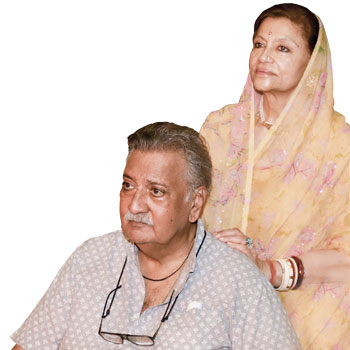
The extensive reach of heritage hotels across India offers unparalleled opportunities for cultural innovation for visitors. The potential for these hotels to thrive remains immense. With around 200 heritage hotels in the country—approximately 100 are located in Rajasthan alone, which has been a pioneer in this sector—there is significant potential for growth in other states as well.
The IHHA is well-positioned to spearhead this movement, utilising its extensive experience and networks to establish India as a premier global heritage destination.
Cultural exchange will be fundamental to the future of heritage tourism. Through interactive cultural festivals, community-led tours, and collaborative programmes, visitors will have the opportunity not only to witness but also to actively participate in meaningful exchanges with local communities. This engagement compels visitors to reflect on their experiences, deepening their understanding and ensuring that tourism benefits both hosts and guests.
A significant emphasis must be placed on preserving indigenous knowledge and local narratives, with local communities playing a crucial role in the storytelling process. In today’s tourism landscape, it is all about creating authentic experiences that portray heritage in a respectful and accurate manner. This community-driven approach will not only protect indigenous traditions but also enhance tourism, creating a sustainable model that enriches both the visitors’ experience and the communities they engage with.
"With over 200 members and partnerships with 10 unique organisations globally, the IHHA boasts an unmatched network of heritage accommodations. No other country can claim such a vast and diverse array of heritage hotels, making it uniquely positioned to lead in environmental conservation efforts within the tourism sector"
CC: What role will environmental consciousness play in the survival and growth of heritage hotels in India?
Environmental consciousness will be crucial for the survival and growth of heritage hotels in India, given the enormous economic potential of tourism. By fostering sustainable tourism practices, we can create local job opportunities and establish income sources that ensure tourism benefits the communities surrounding heritage sites. A vital aspect of this approach will be promoting local cuisine and food tourism, which directly supports farmers and local food producers by offering visitors an authentic taste of the region.
However, it is not solely about developing the heritage hotels and their immediate sites; we must also consider the broader area around them and contribute positively to it. This necessitates support from the government, particularly state governments, to provide the infrastructure necessary for people to access these heritage sites.
Additionally, we need to encourage travellers to explore beyond iconic landmarks. By diversifying tourism across various regions, we can reduce overcrowding at popular sites. This strategy will enhance the overall visitor experience while preserving the integrity of our most famous attractions.
CC: What will be the role of IHHA in environmental conservation?
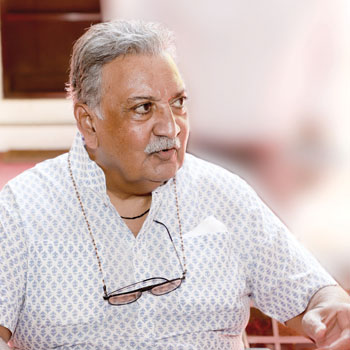
The IHHA will play a crucial role in prioritising environmental conservation through various initiatives, including reforestation projects, waste management systems, and sustainable transport options. Many regions are now engaging in rewiring efforts that allow farming to cease, enabling natural habitats to regenerate and promoting the return of wildlife, birds, butterflies, flowers, and indigenous plants.
Minimising the environmental impact of tourism will be essential for ensuring the long-term sustainability of heritage sites. Furthermore, it is imperative to empower local communities by fostering collaborative management and participatory decision making models, directly involving these communities in the processes that affect them. This approach will ensure that health institutions thrive and that the cultures and traditions being shared with the world are respected and preserved.
With over 200 members and partnerships with 10 unique organisations globally, the IHHA boasts an unmatched network of heritage accommodations. No other country can claim such a vast and diverse array of heritage hotels, making it uniquely positioned to lead in environmental conservation efforts within the tourism sector.
CC: As a Maharaja, you are regarded by the people, and you also have a responsibility to care for them. What do the people of Jodhpur mean to you, and how do they perceive you?
There’s an interesting story behind that. I was just four years old when my father passed away, and from that point onward, my upbringing was shaped by my mother, grandmother, and all the elders, including the staff. They instilled in me a strong sense of responsibility. When I returned from university in 1970, I encountered a period of de-recognition, which was a challenging time. However, upon arriving in Jodhpur, I was truly amazed by the warm welcome from the people. I couldn’t believe it—everyone came out to greet me on the streets. This experience made me realise that while they may not have known me personally, they were inspired by the legacy of my family and the commitments my elders had made.
This realisation prompted me to understand that I needed to be committed as well. Although my capacity to effect change was limited, I decided to establish some trusts and foundations to become more involved in the community. I started engaging with the people, and over time, our relationship deepened.
"Environmental consciousness will be crucial for the survival and growth of heritage hotels in India, given the enormous economic potential of tourism"
CC: What is your vision of the perfect hotel guest?
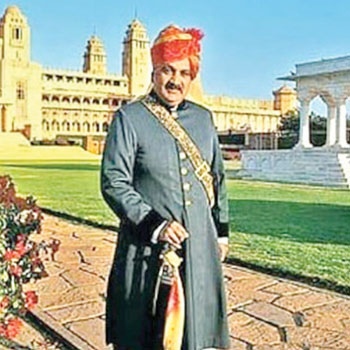
I believe that ideal guests should be aware of their surroundings. Many travellers take the time to read about the places they visit and understand the history, as well as the potential damage that tourism can inflict— like the environmental footprint and waste generated. For instance, I've noticed that Germans vacationing in the Maldives often take their garbage back with them, as there are no facilities for waste disposal on the islands.
Currently, a new concept has emerged called inclusive tourism, where tourists seek to give back to the communities they visit. They want to learn about the initiatives your trust and foundation are involved in, whether they pertain to education, healthcare, or rural development. Tourists are interested in incorporating this awareness into their experiences and are often eager to contribute to these causes. This is an area we need to focus on—creating meaningful experiences for our visitors that promote engagement and community support.